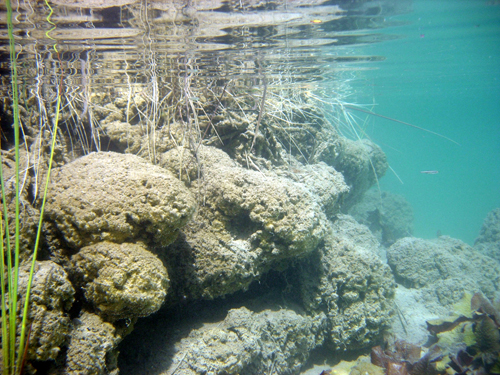Microbialites resemble coral reefs but can also be found in freshwater systems. Composed of sediments built up over many hundreds of years and multiple interactions between microorganisms such as diatoms and cyanobacteria and minerals, they can sequester carbon through a process called biologically-mediated carbonate precipitation, though just how this is done is still poorly understood. Some researchers think microbialites resemble structures that may have existed on Earth 450 million years ago, which could help them recognize signs of life on other planets.
By sequencing a handful of samples taken from several surface layers of an active, river-based microbialite in the Cuatro Cienegas Basin of Northern Mexico, researchers hope to learn more about the microbial communities that are associated with these structures and find out what roles they play in sequestering carbon. Learning more about the genomes of the microbial communities in the microbialite would not only provide more information about the role microbialites play in the global carbon cycle, which could prove crucial as carbon dioxide levels continue to rise, but could also be useful to researchers who work with stromatolites and other, similar structures which can also sequester carbon.

Photo: Mya Breitbart
Principal Investigators: Mya Breitbart, University of South Florida
Program: CSP 2010